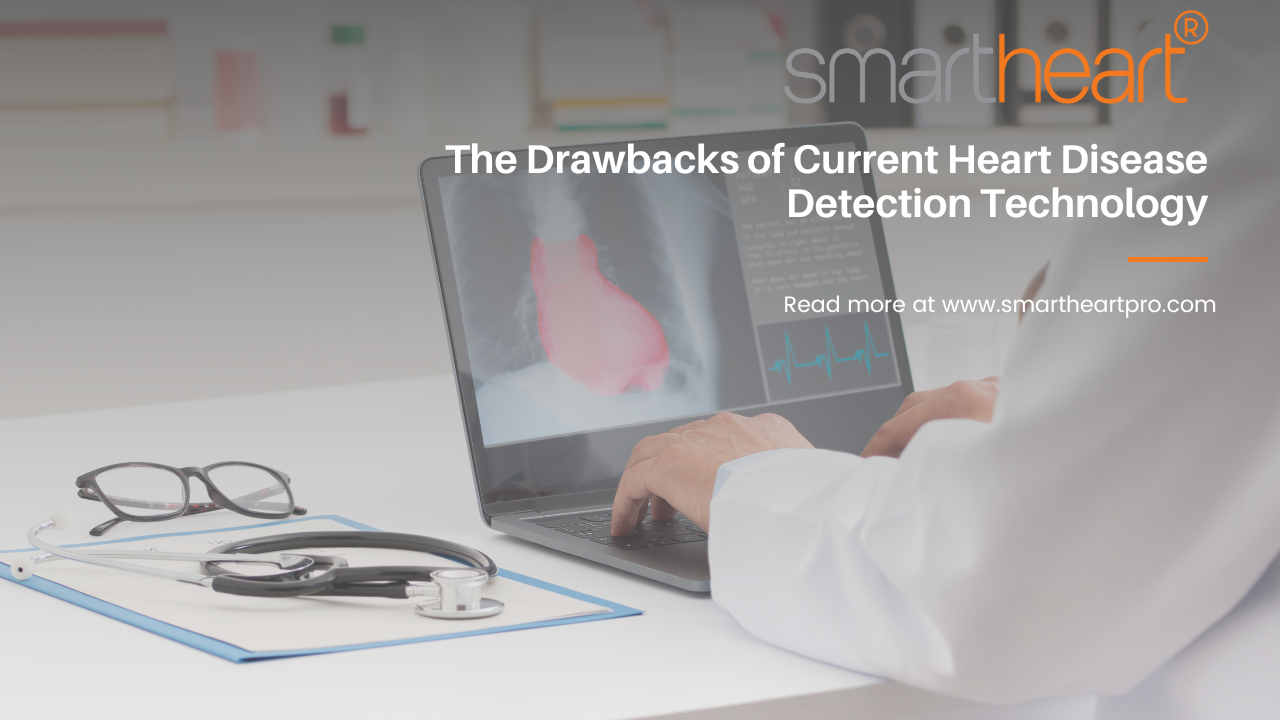The United States is faced with an ever-increasing risk for cardiovascular diseases. The risk of heart attack is up more than 14% since 2020, and the risk of heart failure for the general population is expected to climb again by an alarming 33.4% by the year 2060.
It is important now more than ever to increase the detection and prevention capabilities for cardiac patients to save lives and improve overall health and wellness. Traditionally, patients are left with only few options for heart disease detection. An in-hospital or in-office 12-lead ECG (also known as an EKG) can be taken when a patient comes to visit, providing generally accurate diagnosis of heart disease.
For continuous monitoring, many patients are given a Holter monitor to wear for a minimum of 24 hours to detect irregular rhythms and other cardiac events that may not show up from a single screening. Even Holter monitors have been shown to miss up to 50% of arrythmias occurring in patients. For patients with heart disease that is harder to diagnoses, providers also utilize X-rays, CT scans, and even MRIs.
The Drawbacks of Traditional Methods
12-lead ECG
While the in-office 12-lead ECG is highly effective at detecting abnormalities, it may miss cardiac events that occur irregularly. Many times, patients are unable to make it to the office or hospital when a cardiac event is experienced, making it difficult for providers to perform an ECG at the appropriate time.
In many rural areas, cardiac patients live a large distance from providers and are far less likely to drive that distance to receive a 12-lead ECG screening.
Holter Monitor
The Holter monitor provides a solution to the portability of the 12-lead ECG. Holter monitors can be used to track a patient’s heart rhythms for anywhere from 24 to 48 hours. However, patients must still be prepped in a similar manner to a standard ECG with shaving, gels, and adhesives required. Some patients even have itchiness and rash from the electrodes. Patients are also instructed not to bathe or shower while wearing the device.
Another issue with the Holter Monitor comes in the form of provider review. Typically, a Holter monitor sends the results to a device which then allows providers to print a readout of the patient’s entire cardiac history while wearing the device. However, this process requires the patient to come back into the office and return the device to the provider before any results can be reviewed.
Other Methods
X-rays, CT scans, and MRIs can also be used in the detection of heart disease, though these options are far less frequent than the 12-lead ECG. Each method is far more expensive for both providers and patients and can even expose the patient to unnecessary risks. X-rays and CT scans use radiation that can increase cancer risks for patients.
While MRIs use no radiation for detection, the strong magnet used in the process makes it unsafe for patients with:
- Pacemakers
- Aneurysm clips
- Cochlear implants
- Some prosthetic devices
- Drug infusion pumps
- Neurostimulators
- Bone-growth stimulators
- Intrauterine contraceptive devices
- Any other type of iron-based metal implants.
A Portable Solution
Out of the options discussed above, the in office 12-lead ECG and the 12-lead Holter monitor are the safest for patients. However, both options have drawbacks. The in-office ECG requires a time commitment from the patient while the Holter monitor can disrupt the patient’s daily life and sacrifices on the ease of obtaining ECG results for providers.
SmartHeart® is a fully portable 12-lead ECG technology that requires no uncomfortable gels or adhesives, no patient prep, and provides instant reporting to providers via the SmartHeart® app and an online web platform.
Using SmartHeart® allows providers to receive results the instant a patient performs an ECG. The results can then be used to build a patient profile to compare current and previous results for fast detection of abnormalities and irregularities. SmartHeart® provides an effective solution to the need for continuous cardiac monitoring with 12-lead ECG without sacrificing on the comfort of the patient.
How it Works
Providers can prescribe SmartHeart® to patients who can then perform a 12-lead ECG anytime, anywhere using the guided SmartHeart® app on any smartphone or tablet. After following a few brief instructions, patients can perform a 12-lead ECG and have the results available in just 30 seconds. These results are then instantly sent to the appropriate provider for review, allowing for a faster detection and diagnosis of heart abnormalities than the Holter monitor can provide.
SmartHeart® weighs approximately 1lb and is easy to store and travel with. Using only a Bluetooth connection, patients and providers can have access to instant 12-lead ECG results without sacrificing time and comfort.
For more information on how SmartHeart® is increasing access to 12-lead ECG technology for cardiac patients and providers, visit us at https://www.smartheartpro.com/.
To get in touch or schedule a free demonstration of SmartHeart®, contact us at:
https://www.smartheartpro.com/request-a-demo/
Or Call:
1-866-745-8356

